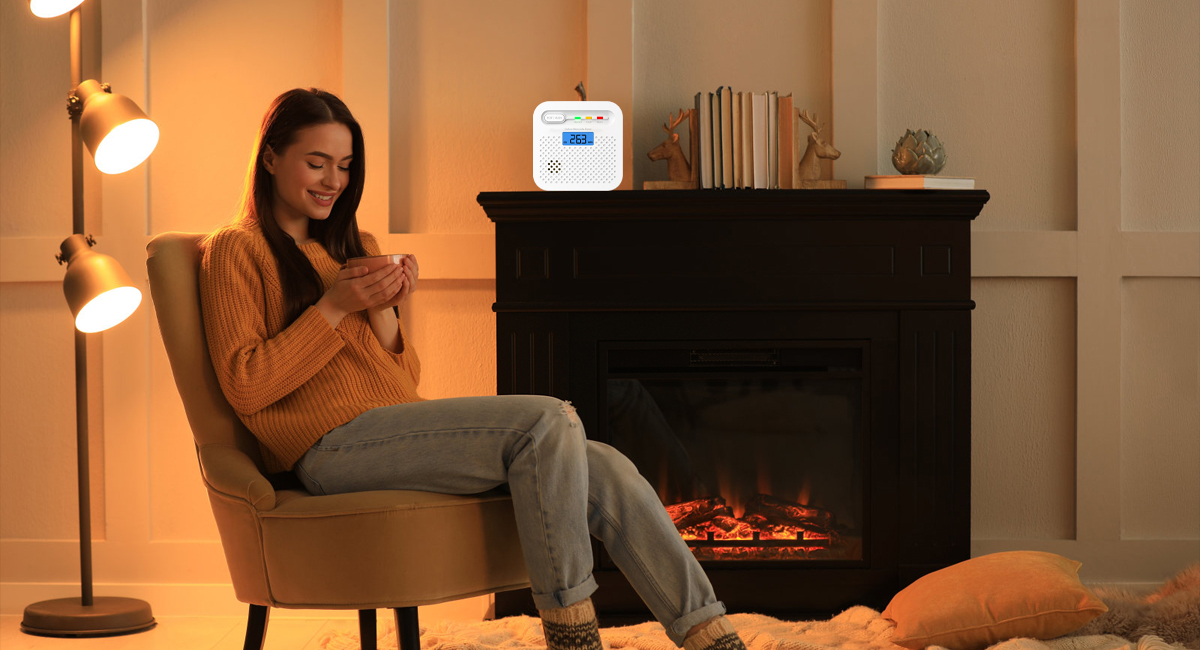I-Carbon monoxide (CO) iyigesi engenambala, engenaphunga, futhi engase ibulale enganqwabelana ekhaya lapho izinto ezibaswayo zikaphethiloli noma izinto zokusebenza zingasebenzi kahle noma lapho umoya ungangeni kahle. Nansi imithombo evamile ye-carbon monoxide ekhaya:

1. Imishini Eshisa Uphethiloli
Izitofu Zegesi Nohhavini:Uma kungenamoya ngendlela efanele, izitofu zegesi nohhavini kungakhipha i-carbon monoxide.
Amaziko:Isithando somlilo esingasebenzi kahle noma esinganakekelwa kahle singakhipha i-carbon monoxide, ikakhulukazi uma kukhona ukuvaleka noma ukuvuza komtshingo.
Izifudumezi Zamanzi Zegesi:Njengeziko, izifudumezi zamanzi zegesi zingakhiqiza i-carbon monoxide uma zingashaywanga kahle.
Izindawo zomlilo nezitofu zezinkuni:Ukuvutha okungaphelele ezindaweni zokubasa izinkuni noma izitofu kungaholela ekukhishweni kwe-carbon monoxide.
Okomisa Izingubo:Imishini yokomisa izingubo esebenza ngegesi nayo ingakhiqiza i-CO uma amasistimu azo okungenisa umoya evinjiwe noma engasebenzi kahle.
2. Izimoto
I-Car Exhaust Egaraji Elinamathiselwe:I-carbon monoxide ingangena endlini uma imoto ishiywa isebenza egaraji elinamathiselwe noma uma kuphuma intuthu egaraji ingena endlini.
3. Amajeneretha aphathekayo nama-heaters
Amajeneretha Anamandla Kagesi:Amajeneretha agijimayo eduze kakhulu nendlu noma endlini ngaphandle kokungena komoya ngendlela efanele kuwumthombo omkhulu wobuthi be-CO, ikakhulukazi phakathi nokucisha kukagesi.
Izifudumezi zesikhala:Izifudumezi zasemkhathini okungezona zikagesi, ikakhulukazi lezo ezinikwa amandla uphalafini noma i-propane, zingakhipha ikhabhoni monoksayidi uma zisetshenziswa ezindaweni ezivalekile ngaphandle kokungena komoya owanele.
4. Amalahle nama-BBQ
Izishisi zamalahle:Ukusebenzisa amalahle okushisa noma ama-BBQ endlini noma ezindaweni ezivalekile njengamagaraji kungakhiqiza amazinga ayingozi e-carbon monoxide.
5. Oshimula Abavinjiwe noma Abaqhekekile
Ushimula ovinjiwe noma oqhekekile ungavimbela i-carbon monoxide ukuthi ingaphumi kahle ngaphandle, ibangele ukuthi inqwabelane ngaphakathi ekhaya.
6. Intuthu kagwayi
Ukubhema endlini kungaba nomthelela emazingeni aphansi e-carbon monoxide buildup, ikakhulukazi ezindaweni ezingenawo umoya ohlanzekile.
Isiphetho
Ukuze unciphise ubungozi bokuchayeka kwe-carbon monoxide, kubalulekile ukugcina izinto zikaphethiloli ezibasayo, uqinisekise ukungena komoya ngendlela efanele, nokusebenzisa.ama-detectors e-carbon monoxideekhaya lonke. Ukuhlolwa njalo koshimula, izithando zomlilo, nezintuba kungasiza ekuvimbeleni ukunqwabelana okuyingozi kwe-CO.
Isikhathi sokuthumela: Oct-19-2024




